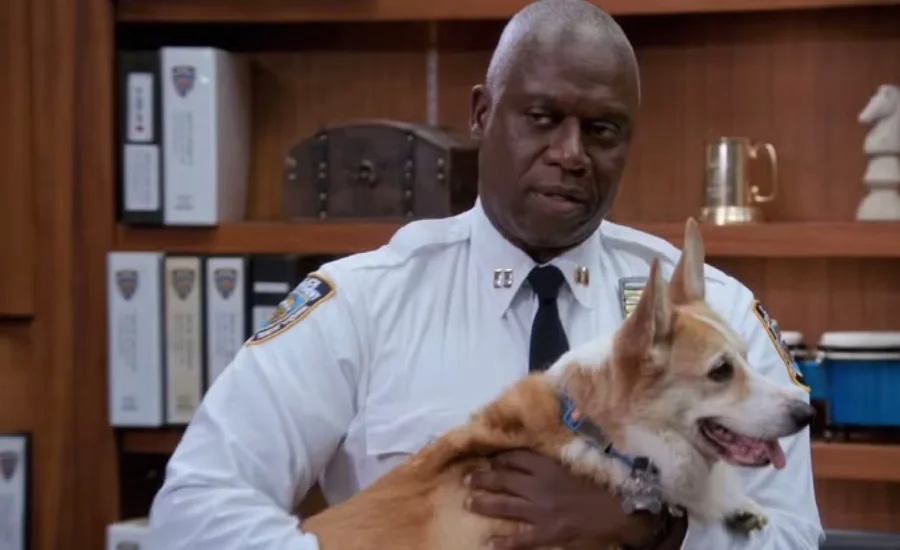Dogs and Heroes Don’t Dress Up Chapter 4 is a quiet, emotional story that blends the spirit of nostalgia with the complexity of modern living. It explores what makes a true hero in a world where appearances often matter more than actions.
This chapter reminds readers that bravery, love, and loyalty exist not in grand gestures but in small, sincere acts of care. The story uses simple language, everyday imagery, and heartfelt emotion to reflect both timeless values and modern culture.
What Happens in Chapter 4
The story follows characters who face emotional choices rather than epic battles. In Chapter 4, the focus shifts from action to reflection. A major turning point arrives when one character begins to understand that being a hero is not about looking strong but about doing the right thing quietly.
A dog plays a central role, guiding the emotional tone of the chapter through its calm and loyal presence. Every scene carries a feeling of honesty and warmth, showing that heroism can exist in moments of silence and kindness.
The Meaning Behind the Title
The phrase “Dogs and Heroes Don’t Dress Up Chapter 4’’ holds deep symbolic value. It tells readers that courage does not come from costumes, power, or fame. A dog does not wear a uniform to show loyalty, and a true hero does not need attention to do what is right.
This message challenges modern culture, where image often overshadows integrity. The title gently pushes readers to value authenticity and quiet strength over glamour and display.
Nostalgia Meets Modern Life
In today’s world, people often feel disconnected from the slower, more emotional rhythm of the past. This chapter bridges that gap. The story uses simple symbols an old photograph, a faded coat, a dog’s leash to awaken feelings of nostalgia. These elements make readers remember warmth, family, and belonging.
Yet, it is set in a modern context, where technology, change, and loneliness create new challenges. The mix of past and present creates balance, reminding us that while times change, emotions do not. The longing for connection, honesty, and meaning remains the same.
Dogs as Everyday Heroes
The dog in Chapter 4 represents loyalty, healing, and silent understanding. Its role mirrors the importance of dogs in real life. Over recent years, people have increasingly treated dogs as emotional partners rather than pets. They appear in therapy, education, and even workplaces, helping reduce stress and anxiety.
Just as in the story, dogs in real life often act as companions that guide humans through fear, sadness, or confusion. Their loyalty reminds us that love does not need words or costumes it simply exists.
The Central Themes of Chapter 4
Dogs and Heroes Don’t Dress Up Chapter 4 explores the idea that heroism can be found in ordinary life. The story questions what it means to be strong. It shows that identity is more than appearance, and nostalgia is more than memory.
The dog symbolizes emotional balance, guiding both characters and readers to look inward. The human-animal bond becomes a quiet lesson about trust and acceptance. Through soft tones and thoughtful scenes, the chapter turns everyday actionsactions helping, waiting, and listening into powerful symbols of hope.
The Feel and Style of the Chapter
The chapter’s visuals are gentle, slow, and emotional. The artwork focuses on textures and small movements. a loose thread on clothing, a hand resting on fur, a quiet evening sky. These details create a nostalgic mood. Instead of fast action or bright energy, the pacing allows the reader to breathe and think. This style mirrors modern life’s longing for peace in a noisy, fast-moving world. The art, dialogue, and silence all work together to make the reader feel calm yet deeply moved.
Lessons from the Story
Dogs and Heroes Don’t Dress Up Chapter 4 teaches readers that heroism lives in kindness, not in power. It also shows that emotional strength comes from patience and compassion. The dog’s simple loyalty becomes a metaphor for human integrity. Readers learn that caring for others, staying calm, and being true to oneself are acts of modern heroism. The story also inspires creators and writers to use ordinary details to show emotion because even a quiet scene can carry deep meaning.
How It Reflects Today’s Society
Modern living often focuses on visibility how things look online, what people wear, and how much attention they receive. This chapter quietly rejects that idea. It portrays a world where goodness is not seen but felt. The characters are not perfect or famous; they are real, vulnerable, and relatable. This reflection of authenticity mirrors the emotional needs of today’s readers, who want stories that feel honest, gentle, and human.
Modern Trends That Connect to the Story
In 2023,2025, people are more drawn to emotional storytelling. The rise of therapy animals, nostalgic aesthetics, and slow living all show a cultural shift toward calmness and emotional truth. The story reflects this change perfectly. It gives readers comfort while reminding them of the importance of empathy. It brings nostalgia into the present, allowing both old and young readers to find meaning in quiet moments and loyal companionship.
Discussion and Reflection
Readers and teachers can use Dogs and Heroes Don’t Dress Up Chapter 4 to reflect on what defines a hero today. It encourages discussions about self-image, inner values, and relationships. It also invites people to think about their connection with animals and how these bonds shape emotional health. The story is not about grand victories but about daily courage, the kind that comes from care, forgiveness, and love.
Frequently Asked Questions
What is the main idea of Chapter 4?
It shows that heroism is quiet, personal, and rooted in kindness rather than fame.
Why is the dog important in the story?
The dog represents loyalty, trust, and unconditional love. It acts as a symbol of hope and emotional healing.
What does “don’t dress up” mean?
It means that true character and courage do not need to be shown through appearance or recognition.
How does this story connect to real life?
It reflects modern emotional needs, showing how people and pets rely on each other for comfort and understanding.
Why does nostalgia matter here?
Nostalgia helps readers connect emotionally with the story, reminding them of values like care, humility, and sincerity.
Final Thoughts
Dogs and Heroes Don’t Dress Up Chapter 4 is a gentle but powerful reminder that not all heroes wear capes. Some sit quietly beside us, offering warmth and trust without needing words. The chapter captures the balance between nostalgia and modern living, showing that even in a fast, digital world, human emotion and loyalty remain timeless. The story touches the heart because it feels real it celebrates the ordinary, the loyal, and the kind. In a world that constantly demands more, Chapter 4 teaches us to appreciate the quiet moments that define who we truly are.
If you enjoyed this chapter, look for other stories that pair nostalgia with subtle modern dilemmas. You’ll likely find comfort, surprise, and a reminder: heroes don’t always dress up sometimes they sit quietly beside you, tail wagging, asking only to be noticed.
Next Read: BusinessMusk


